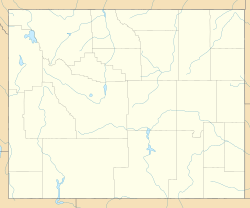Cow Lake (Teton County, Wyoming) facts for kids
Quick facts for kids Cow Lake |
|
|---|---|
| Location | Grand Teton National Park, Teton County, Wyoming, US |
| Coordinates | 43°49′46″N 110°33′47″W / 43.82944°N 110.56306°W |
| Lake type | Glacial Lake |
| Basin countries | United States |
| Max. length | .25 mi (0.40 km) |
| Max. width | .10 mi (0.16 km) |
| Surface elevation | 6,850 ft (2,090 m) |
Cow Lake is a lovely lake located in Grand Teton National Park. This park is in the state of Wyoming, United States. Cow Lake is a special place to visit within this famous national park.
Contents
Cow Lake: A Natural Wonder in Wyoming
Cow Lake is a small but important part of the amazing scenery in Grand Teton National Park. It's a great spot for nature lovers and anyone exploring the park.
Where is Cow Lake?
Cow Lake is found about 1.25 miles (2 kilometers) south-southeast of Signal Mountain. Signal Mountain is a well-known peak in the park. This makes Cow Lake easy to find if you are exploring that area.
What is a Glacial Lake?
Cow Lake is known as a glacial lake. This means it was formed a very long time ago by glaciers. Glaciers are huge, slow-moving rivers of ice. As these giant ice sheets moved across the land, they carved out hollows and valleys. When the glaciers melted, these hollows filled with water, creating lakes like Cow Lake.
Exploring the Potholes Region of Jackson Hole
Cow Lake is the largest lake in what is called the "potholes region" of Jackson Hole.
- The potholes region gets its name from many small, round depressions in the ground. These "potholes" are actually called kettles. They were formed when chunks of ice broke off from glaciers and got buried in the ground. When the ice melted, it left behind these bowl-shaped holes. Many of these kettles filled with water, creating small lakes and ponds.
- Jackson Hole is a large valley in Wyoming. It's surrounded by tall mountains, including the Teton Range. This valley was also shaped by glaciers long ago. It's a famous area for its natural beauty and wildlife.
Cow Lake is a great example of how powerful glaciers can be in shaping our planet's landscape.



